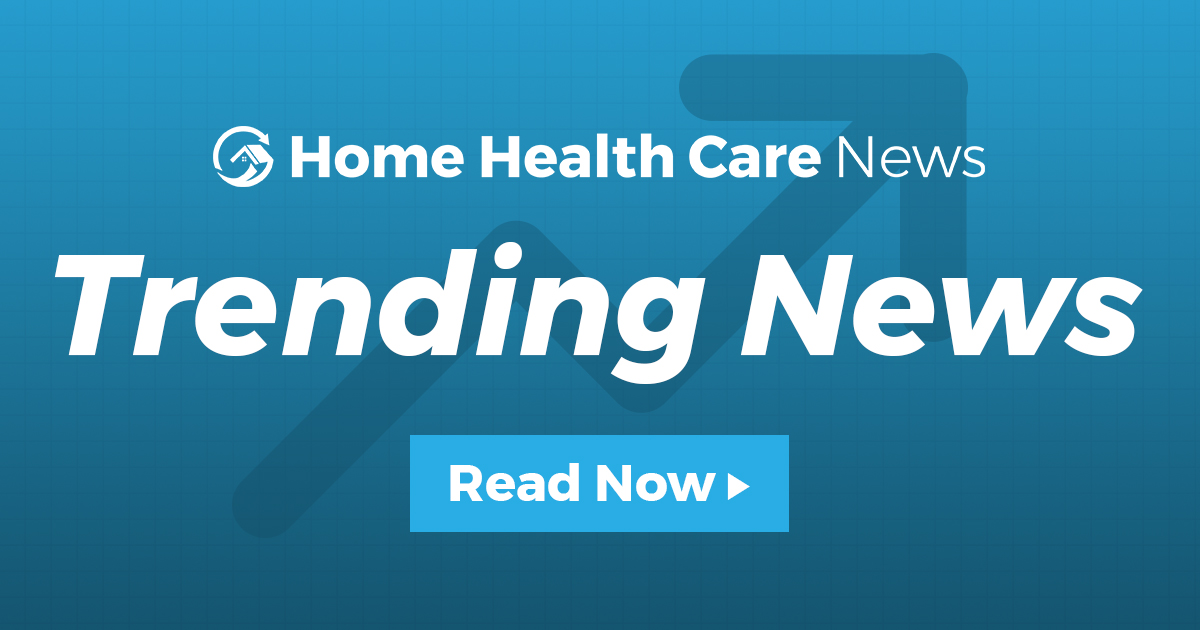Slow But Steady Growth In U.s. Home Health Care Spending Projected Through 2033

In 2024, home health care experienced an 8.5% average annual growth, marking a slowdown from the 10.8% increase in 2023.
The slowdown is attributed to a decline in spending growth following the COVID-19 pandemic, according to a new report from the Centers for Medicare and Medicaid Services (CMS) published in Health Affairs.
Still, the report’s authors forecast that national health spending will hit $8.6 trillion by 2033.
From 2024 to 2033, growth in national health care expenditure is expected to outpace GDP growth, at 5.8% versus 4.3%. By 2033, the health care sector’s share of the economy is projected to reach 20.3%, up 2.7% from 2023.
“In 2023, the insured portion of the population reached a record high of 92.5%,” the report read. “The peak in 2023 was mainly due to record-high Medicaid enrollment, which was affected by the continuous enrollment requirement in the Families First Coronavirus Response Act (FFCRA) of 2020.”
Personal health care spending, which increased by 9.4% in 2023, is expected to continue its strong rise in 2024, increasing by 8.7%. Researchers believe this growth was faster than many insurers predicted, leading to higher medical loss ratios for some publicly traded companies.
Spending by payer
Medicare expenses increased to 8.3% in 2024, a slight rise from 8.1% in 2023, reaching $1.1 trillion, according to the report. This steady increase was driven by a slower rise in Medicare Advantage capitation rates, which offset the faster growth in fee-for-service payments.
Medicare spending is forecasted to grow by 7.7% in 2025, with most areas of personal health care experiencing slower growth. Researchers expect this trend to continue in 2026 and 2027, with a projected growth rate of 8.9%.
Between 2028 and 2033, Medicare expenditures are projected to grow by an average of 7.4%, with enrollment increasing by 2.2% in 2028 and 2% in 2029.
While Medicare enrollment is experiencing a surge, researchers anticipate that Medicaid will continue its decline.
Medicaid spending decreased from 7.9% in 2023 to 6.2% in 2024, with total expenditures reaching $925.6 billion. Enrollment also fell by 7.9% in 2024, partly due to disenrollments as well as the addition of new and re-enrolled beneficiaries.
For 2025, even with a projected 1.2% reduction in Medicaid enrollment, spending growth is expected to rise to 7.4%, due to a slower decline in enrollment relative to 2024.
Between 2028 and 2033, Medicaid spending is projected to grow at 6% to 6.5% annually, with enrollment expected to increase modestly, averaging 0.7% per year.
Regarding private insurance, the report predicts a 7.6% growth rate for 2025. Out-of-pocket spending growth is expected to slow to 6.4% in 2025, down from 7.3% in 2024.
By 2033, private health insurance spending is projected to grow at an average rate of 4.3%, which is likely lower than the growth rates of Medicare and Medicaid, reflecting lower enrollment increases as many individuals disenroll and transition into Medicare.
“Although the projections presented reflect current law, future legislative and regulatory health policy changes could have a significant impact on the projections of health insurance coverage, health spending trends and related cost-sharing requirements, and they thus could ultimately affect the health share of GDP by 2033,” the report concluded.
The post Slow But Steady Growth In U.S. Home Health Care Spending Projected Through 2033 appeared first on Home Health Care News.
Popular Products
-
 Foldable Metal Tripod Stand Flute or ...
Foldable Metal Tripod Stand Flute or ...$37.99$25.78 -
 Ergonomic Memory Foam Foot Rest for U...
Ergonomic Memory Foam Foot Rest for U...$101.99$70.78 -
 Universal Exercise Bike Pedals with N...
Universal Exercise Bike Pedals with N...$146.99$101.78 -
 Leg Stretcher Strap with 10 Loops for...
Leg Stretcher Strap with 10 Loops for...$27.99$18.78 -
 Silicone Hand Gripper & Ring Finger S...
Silicone Hand Gripper & Ring Finger S...$44.99$30.78